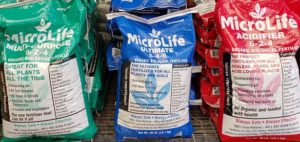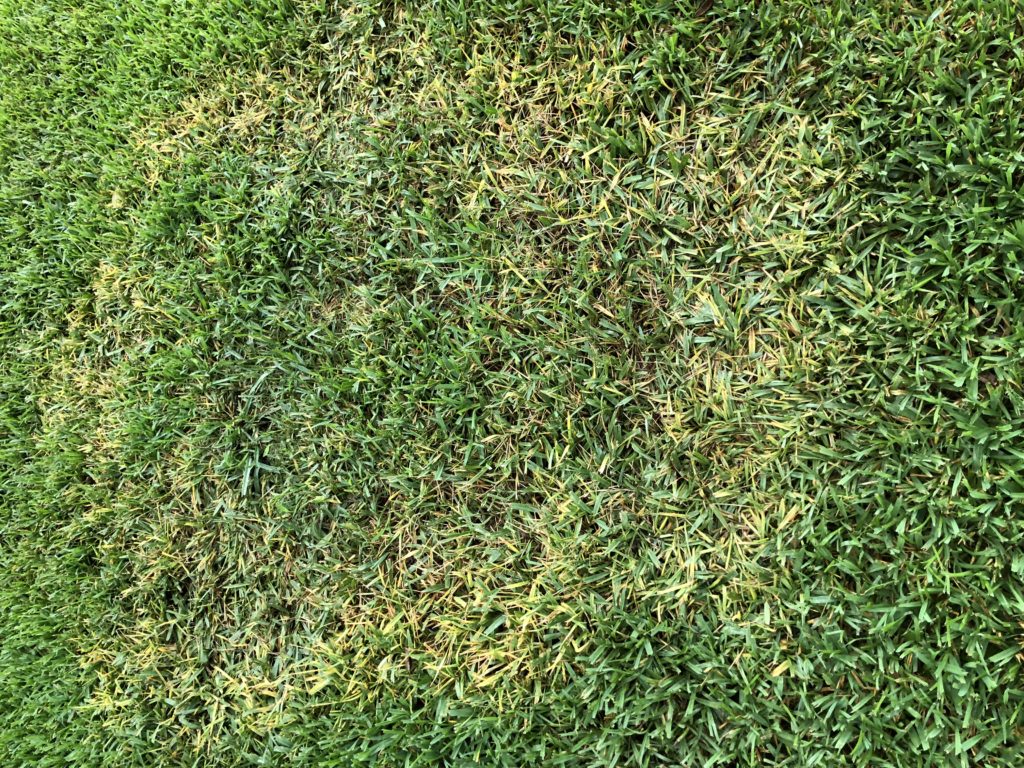Brown Patch is a fungus that shows up in our lawns in the spring and fall, when temperatures begin to cool. Because it needs cool, moist conditions, we do not see brown patch fungus in the summer. If you have had brown patch in your lawn in the past, it is probable that you will see it again once the conditions are right for its development. St. Augustine is most often infected, but Bermuda and Zoysia will become infected under the right conditions. Over-watered and over-fertilized lawns are more susceptible to the fungus.

Brown Patch is diagnosed by the presence of brown leaves on green runners. The leaves pull off the runners easily, as if rotted. Roots and runners are not affected. The circular patches in the lawn become brown, then begin to green up in the middle as the grass recovers, forming a donut shape. Weeds will tend to grow in the dead areas, and if not treated, the patches will be slow to green up in the spring.
Brown Patch is a “self-limiting” disease. Once conditions are no longer conducive to its development, it will die out and the grass will return. Treating with biologicals or chemicals will hasten the recovery process.
Since Brown Patch fungus spores germinate in the presence of moisture, change the irrigation in spring and fall to run in the morning, right before the sun comes up, so the leaves will dry quickly. Fill-in any low spots in the lawn, where water may puddle and encourage disease.
Apply MicroLife Organic Biological Fertilizer in both spring and fall to areas that have been affected before, or to the entire lawn as a preventative. The beneficial microorganisms are proven microbial soil disease fighters! MicroLife Organic Biological Fertilizer provides incredible turf nutrition and improves your soil as well! Apply at the rate of 20#/1000 sq.ft.

Chemical control methods may also be used. Please consult nursery staff for recommendations and follow label directions.
When treating Brown Patch fungus, treat the entire lawn, or treat areas affected, extending coverage to 3’ beyond affected areas.
Note:
If your lawn is less than one year old, avoid using synthetic chemicals on it.
